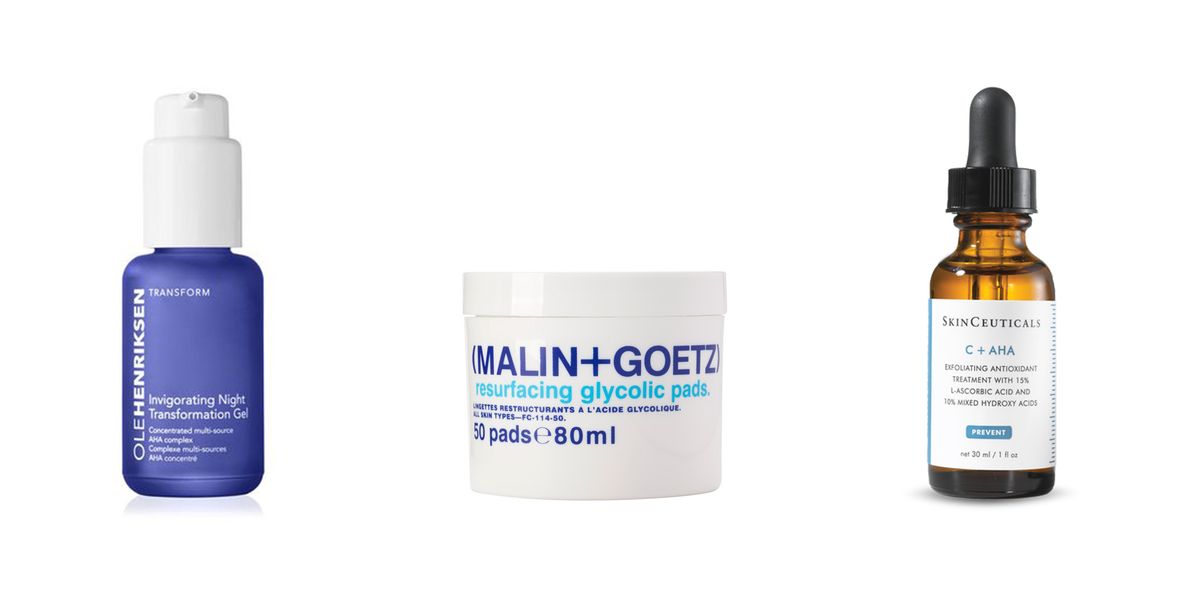As far as peeling agents go, Glycolic acid is one of those miracle ingredients for brighter, more radiant complexion. The potent ingredient (that derms swear by, btw) is found in a slew of cult skincare products, purported to re-texturize dull, uneven, and even acne-prone skin and reverse signs of aging. You’ve likely heard about Glycolic acid and its benefits, and maybe you’ve even already hopped on the bandwagon and experimented with the creme de la creme of the Alpha Hydroxy Acid family. These are a lot of claims for one ingredient to live up to, so I asked Dr. Carmen Castilla of Tribeca Skin Center, which offers an array of peels, including Glycolic, Salicylic, PCA, and other peels in their lineup, why Glycolic should nab a spot in your beauty arsenal.
What is Glycolic acid?
It’s the answer to all your hyper-pigmentation woes, that’s for sure. “Glycolic acid is an AHA, or Alpha Hydroxy Acid. It’s a water soluble acid and an ingredient that increases luminosity of the skin because it exfoliates the outermost dead layer of the skin, which is called the Stratum Corneum, and improves the reflection of light on the skin. Sometimes people use scrubs, which are abrasive and can cause irritation, but unlike scrubs, when Glycolic acid is used at the right percentage and when done appropriately, it’s a much gentler way to exfoliate the skin.”
What types of skin does it treat?
Basically, if you’re a human being you can probably benefit from Glycolic acid. The ingredient specifically treats wrinkles, hyper-pigmentation, and acne prone skin, so if one or more of these is a skincare concern of yours, it’s worthy of your top shelf. It takes that very top layer of the skin and removes it. As we age, our skin exfoliates slower so exfoliating the skin with a little help from Glycolic reveals newer skin, which becomes more even and radiant.
How do you use it?
Most people buy over-the-counter products, like cleansers, serums, and moisturizers. The only thing is if people have sensitive skin, you have to start slow—really slow. Easy yourself into a Glycolic acid routine by using one Glycolic product every other day and increase dosage when you feel your skin can tolerate it. (For me, I used Glycolic every other day for two weeks, then upped the ante to once every night). And pro tip: AHA makes you a lot more sensitive to the sun (and can be super drying), so you absolutely must use sun protection every single day.
So, what’s the correct percentage of Glycolic acid?
You shouldn’t use anything more than 10 percent at home because the higher the percentage, the more likely it is to penetrate deeper. That might sound good, but you can actually cause your skin to get a chemical burn, especially if you leave Glycolic acid on for too long. Anything higher than 10 percent should be administered only by a dermatologist.
Another popular acid found in skincare products is Salicylic acid. What’s the difference?
So there are AHAs, which are derived from sugary fruits and are water soluble. AHAs work on the superficial layer of the skin while BHAs—Beta Hydroxy Acids—are oil soluble and penetrate deeper into the pores. The BHAs tend to be a little bit better for acne-prone skin because it targets acne head-on, that’s why you find it in all the over counter acne products because it seeps into the pores and acne legions better because it’s oil soluble.



